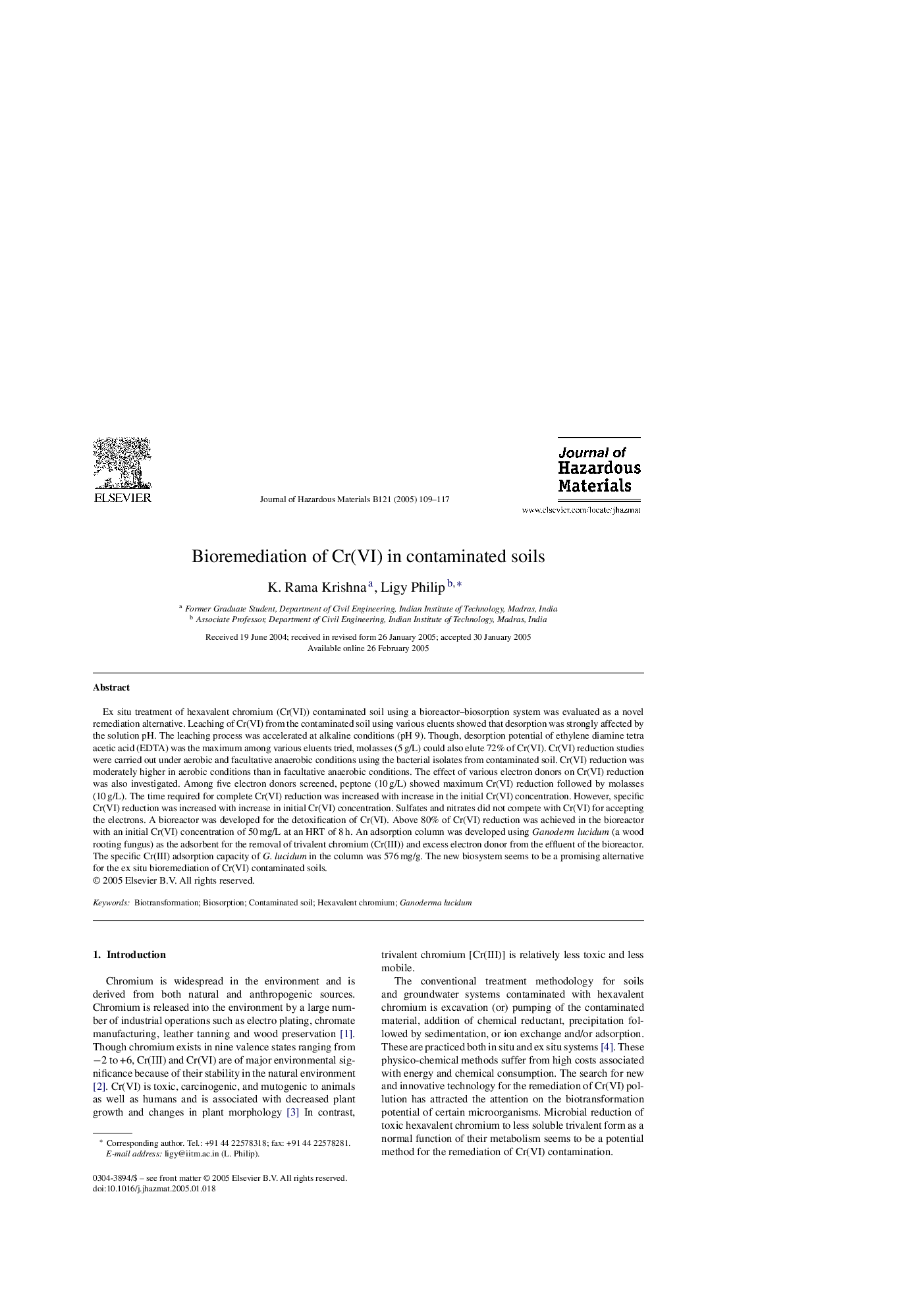| کد مقاله | کد نشریه | سال انتشار | مقاله انگلیسی | نسخه تمام متن |
|---|---|---|---|---|
| 9674271 | 1453202 | 2005 | 9 صفحه PDF | دانلود رایگان |
عنوان انگلیسی مقاله ISI
Bioremediation of Cr(VI) in contaminated soils
دانلود مقاله + سفارش ترجمه
دانلود مقاله ISI انگلیسی
رایگان برای ایرانیان
کلمات کلیدی
موضوعات مرتبط
مهندسی و علوم پایه
مهندسی شیمی
بهداشت و امنیت شیمی
پیش نمایش صفحه اول مقاله

چکیده انگلیسی
Ex situ treatment of hexavalent chromium (Cr(VI)) contaminated soil using a bioreactor-biosorption system was evaluated as a novel remediation alternative. Leaching of Cr(VI) from the contaminated soil using various eluents showed that desorption was strongly affected by the solution pH. The leaching process was accelerated at alkaline conditions (pH 9). Though, desorption potential of ethylene diamine tetra acetic acid (EDTA) was the maximum among various eluents tried, molasses (5Â g/L) could also elute 72% of Cr(VI). Cr(VI) reduction studies were carried out under aerobic and facultative anaerobic conditions using the bacterial isolates from contaminated soil. Cr(VI) reduction was moderately higher in aerobic conditions than in facultative anaerobic conditions. The effect of various electron donors on Cr(VI) reduction was also investigated. Among five electron donors screened, peptone (10Â g/L) showed maximum Cr(VI) reduction followed by molasses (10Â g/L). The time required for complete Cr(VI) reduction was increased with increase in the initial Cr(VI) concentration. However, specific Cr(VI) reduction was increased with increase in initial Cr(VI) concentration. Sulfates and nitrates did not compete with Cr(VI) for accepting the electrons. A bioreactor was developed for the detoxification of Cr(VI). Above 80% of Cr(VI) reduction was achieved in the bioreactor with an initial Cr(VI) concentration of 50Â mg/L at an HRT of 8Â h. An adsorption column was developed using Ganoderm lucidum (a wood rooting fungus) as the adsorbent for the removal of trivalent chromium (Cr(III)) and excess electron donor from the effluent of the bioreactor. The specific Cr(III) adsorption capacity of G. lucidum in the column was 576Â mg/g. The new biosystem seems to be a promising alternative for the ex situ bioremediation of Cr(VI) contaminated soils.
ناشر
Database: Elsevier - ScienceDirect (ساینس دایرکت)
Journal: Journal of Hazardous Materials - Volume 121, Issues 1â3, 20 May 2005, Pages 109-117
Journal: Journal of Hazardous Materials - Volume 121, Issues 1â3, 20 May 2005, Pages 109-117
نویسندگان
K. Rama Krishna, Ligy Philip,